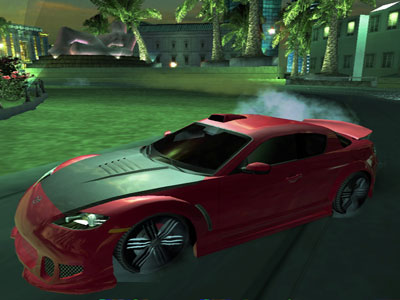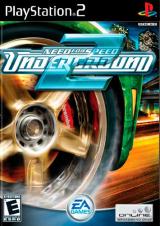EA's second release in the subgenre in just over two months is another solid entry, even if it's not quite as polished as its predecessor. This may disappoint some fans of last year's best-selling title, initially. But gamers who give Need for Speed Underground 2 a solid chance will once again be entranced. As before, the game performs where it counts; yes, racing in Need for Speed Underground 2 feels excellent.
The Open World
Though, the racing was just as exhilarating in last year's effort as well. So what differentiates Need for Speed Underground 2 from its predecessor is largely its racing environment. Like last year, all races will be held on different tracks cut out of a single city's street layout. But this year, players are given access to the city between races as well. In fact, rather than choosing race events from a menu, in general the game requires players to explore the city to find hidden events and shops. New events are marked on the world map using color-coded icons which indicate which of the game's seven race types it represents: Circuit, Sprint, Drift, Drag, Outrun, Street X, and URL Race. (Underground Racing League) Once marked, gamers can choose to navigate to the race location using the mini-map or by activating the "GPS system." I found the latter to be a wonderful asset, especially when starting out, as it makes trips to and from unknown locations a breeze. When activated, an arrow appears atop the screen that points not to the final location, but rather in the direction of the fastest path to the destination. Anyone who's had experience navigating using a giant arrow in another racer knows just how difficult it can be. Fortunately, the GPS System in Need for Speed Underground 2 works flawlessly and should be used an example of the just how well such an indicator should function.

Many of Need for Speed Underground 2's successes and its faults are introduced as a result of this major change. It's worth noting that it is the game's open world that initially drew my attention. I'm a huge fan of Need for Speed Underground, though I'd quickly admit that the game isn't without problems. The most major offense, in my opinion, is simply how alike each of the game's tracks feel. Thankfully, due to the sheer size of Bayview -- the fictional urban setting in Need for Speed Underground 2 -- the same is not true of courses in Underground 2. The city is composed of five regions that each have a distinct feel and street layout. The downtown area, for example, is composed of short streets with loads of turns which offer a very technical racing experience reminiscent of the first Need for Speed Underground. The Jackson Heights area, rather, is hilly and contains winding roads which are similar to those in earlier Need for Speed games. There's an extensive freeway system that surrounds the entire city; in addition to offering the best way to travel from place to place, it and the nearby airport area provide the fastest places to race.





 Outstanding!
Outstanding!


